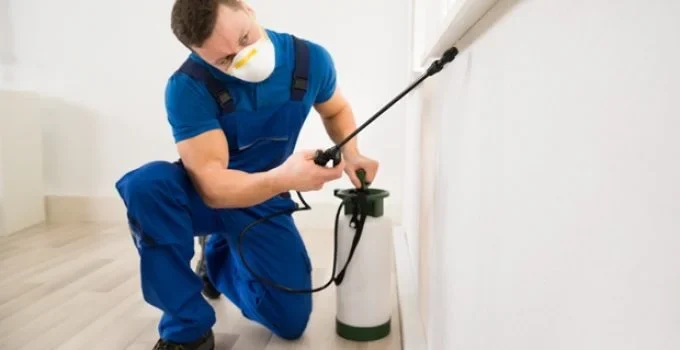Termites are one of the most destructive pests in the world, silently causing billions in structural damage every year. Getting rid of termites isn’t as simple as spraying insecticide—it requires identifying the species, choosing the right treatment, and often working with professionals. This guide outlines research-backed methods to eliminate termites and prevent reinfestation effectively.
Dive Deeper
- Know Your Enemy: Termite Types
- Signs of a Termite Infestation
- DIY Termite Control Methods
- When to Call a Professional
- Table: Termite Control Options Compared
- 🎯 Final Thoughts
- 📚 References
Know Your Enemy: Termite Types
There are over 2,000 termite species globally, but three types are responsible for nearly all structural damage:
- Subterranean termites (Rhinotermitidae): Live underground and enter buildings through foundations; most common in the U.S.
- Drywood termites (Kalotermitidae): Nest inside dry wood; don’t require soil contact
- Dampwood termites (Termopsidae): Prefer moist, decaying wood; less likely to infest homes
🏚️ According to the U.S. Department of Agriculture, termites are responsible for more than $40 billion in global damage annually, affecting over 600,000 U.S. homes each year [1].
Signs of a Termite Infestation
You may not see termites directly, but look for these common warning signs:
- Mud tubes on walls or foundations (subterranean termites)
- Hollow-sounding wood or blistering paint
- Tiny holes and frass (wood pellets) from drywood termites
- Discarded wings near windows or lights (indicates swarming alates)
🕵️ Tip: Termites are most active in spring and summer, making now the ideal time for inspections.
DIY Termite Control Methods
Some early infestations or drywood termites may be managed at home:
- Boric acid: Disrupts the termite nervous system and is used in powder or spray form [2]
- Nematodes: Beneficial microscopic worms that infect and kill termites naturally
- Cardboard traps: Attract termites, which can then be removed and destroyed
- Orange oil: A natural extract shown to be effective against drywood termites in small infestations [3]
⚠️ Caution: DIY methods are most effective before the colony matures or spreads.
When to Call a Professional
Severe infestations, especially of subterranean termites, require licensed pest control. Professionals use:
- Soil-applied termiticides: Create a chemical barrier around the home
- Bait stations: Termites carry poisoned bait back to the colony
- Fumigation: Whole-structure gas treatment for advanced drywood infestations
- Thermal or microwave treatment: Kills termites with targeted heat, used in some localized cases [4]
🧪 According to the EPA, products like fipronil and imidacloprid are among the most effective termiticides when applied correctly [5].
Table: Termite Control Options Compared
| Method | Effective Against | DIY-Friendly? | Best For |
|---|---|---|---|
| Boric Acid | Drywood, subterranean | Yes | Small, localized infestations |
| Beneficial Nematodes | Subterranean | Yes | Natural garden treatments |
| Bait Stations | Subterranean | No (Pro install) | Long-term control & colony collapse |
| Fumigation | Drywood | No | Whole-home infestations |
| Orange Oil | Drywood | Yes | Spot treatments |
| Soil Barrier (Fipronil) | Subterranean | No | Professional perimeter protection |
🎯 Final Thoughts
Termites are persistent, silent invaders, but they’re not unstoppable. Effective removal depends on:
- Correct species identification
- Timely detection
- Choosing the right treatment—DIY or professional
A mix of prevention, monitoring, and smart action can save you thousands in repairs and protect the long-term integrity of your home.
📚 References
- United States Department of Agriculture (USDA). “Termite Damage and Control.” Forest Service Insect & Disease Leaflet 18, 2022.
https://www.fs.usda.gov/Internet/FSE_DOCUMENTS/fsbdev2_042235.pdf - Su, N.-Y., & Scheffrahn, R. H. “Efficacy of Borates Against Termites.” Sociobiology, vol. 17, no. 2, 1990.
https://www.researchgate.net/publication/285920127 - Lewis, V. R. “Alternative Control Strategies for Drywood Termites.” University of California Integrated Pest Management, 2003.
https://www2.ipm.ucanr.edu/agriculture/structural/Alternative-Control-Strategies-for-Drywood-Termites/ - Rust, M. K., & Reierson, D. A. “Termite Control: New Directions.” Annual Review of Entomology, vol. 36, 1991.
https://www.annualreviews.org/doi/10.1146/annurev.en.36.010191.000523 - United States Environmental Protection Agency (EPA). “Termiticides for Structural Pest Control.” EPA.gov, 2023.
https://www.epa.gov/pesticides/termiticides-structural-pest-control
